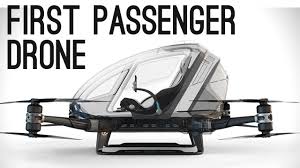
Breaking News
 WOW Canada Is UPPING ITS KILLING EFFORTS By Building SECRET DEATH DENS...
WOW Canada Is UPPING ITS KILLING EFFORTS By Building SECRET DEATH DENS...
 "This Is What They Don't Want You To Know" | Whitney Webb
"This Is What They Don't Want You To Know" | Whitney Webb
 Refueling a NUCLEAR REACTOR - Smarter Every Day 311
Refueling a NUCLEAR REACTOR - Smarter Every Day 311
 My Exclusive Interview With Benjamin Netanyahu! (You didn't see this coming)
My Exclusive Interview With Benjamin Netanyahu! (You didn't see this coming)
Top Tech News
 The 6 Best LLM Tools To Run Models Locally
The 6 Best LLM Tools To Run Models Locally
 Testing My First Sodium-Ion Solar Battery
Testing My First Sodium-Ion Solar Battery
 A man once paralyzed from the waist down now stands on his own, not with machines or wires,...
A man once paralyzed from the waist down now stands on his own, not with machines or wires,...
 Review: Thumb-sized thermal camera turns your phone into a smart tool
Review: Thumb-sized thermal camera turns your phone into a smart tool
 Army To Bring Nuclear Microreactors To Its Bases By 2028
Army To Bring Nuclear Microreactors To Its Bases By 2028
 Nissan Says It's On Track For Solid-State Batteries That Double EV Range By 2028
Nissan Says It's On Track For Solid-State Batteries That Double EV Range By 2028
 Carbon based computers that run on iron
Carbon based computers that run on iron
 Russia flies strategic cruise missile propelled by a nuclear engine
Russia flies strategic cruise missile propelled by a nuclear engine
 100% Free AC & Heat from SOLAR! Airspool Mini Split AC from Santan Solar | Unboxing & Install
100% Free AC & Heat from SOLAR! Airspool Mini Split AC from Santan Solar | Unboxing & Install
 Engineers Discovered the Spectacular Secret to Making 17x Stronger Cement
Engineers Discovered the Spectacular Secret to Making 17x Stronger Cement
Uber Is Working On A Vertical-Takeoff Aircraft

Ehang 184 Passenger Drone
Uber is looking for a VTOL aircraft, but they might instead settle on an autonomous people-carrying helicopter, like the Ehang 184 picture.
Uber, the hungry Silicon Valley company that turned people with cars and smartphones into a transportation fleet to rival taxis (while skirting things like labor regulations in the process), has set its sights on something much larger. Uber is already working on driverless cars, which happily for the company exist outside of labor law, but not even unmanned driving machines are enough to satisfy Uber's ambitions. The company wants a flying car.
Specifically, Uber products head Jeff Holden is looking at VTOL -- "vertical takeoff and landing" -- technologies. Holden expressed this interest during an interview with Recode executive editor Kara Swisher at the Nantucket Conference last Sunday. As Swisher reports:
Holden said that he has been researching the area, "so we can someday offer our customers as many options as possible to move around." He added that "doing it in a three-dimensional way is an obvious thing to look at."
Holden said in the interview that such technology could be in use within a decade, which is an aggressive prediction, given the issues around the complexity of movement in the air above densely populated areas. (Also, you know, the possibility of these VTOL vehicles crashing into each other.)




